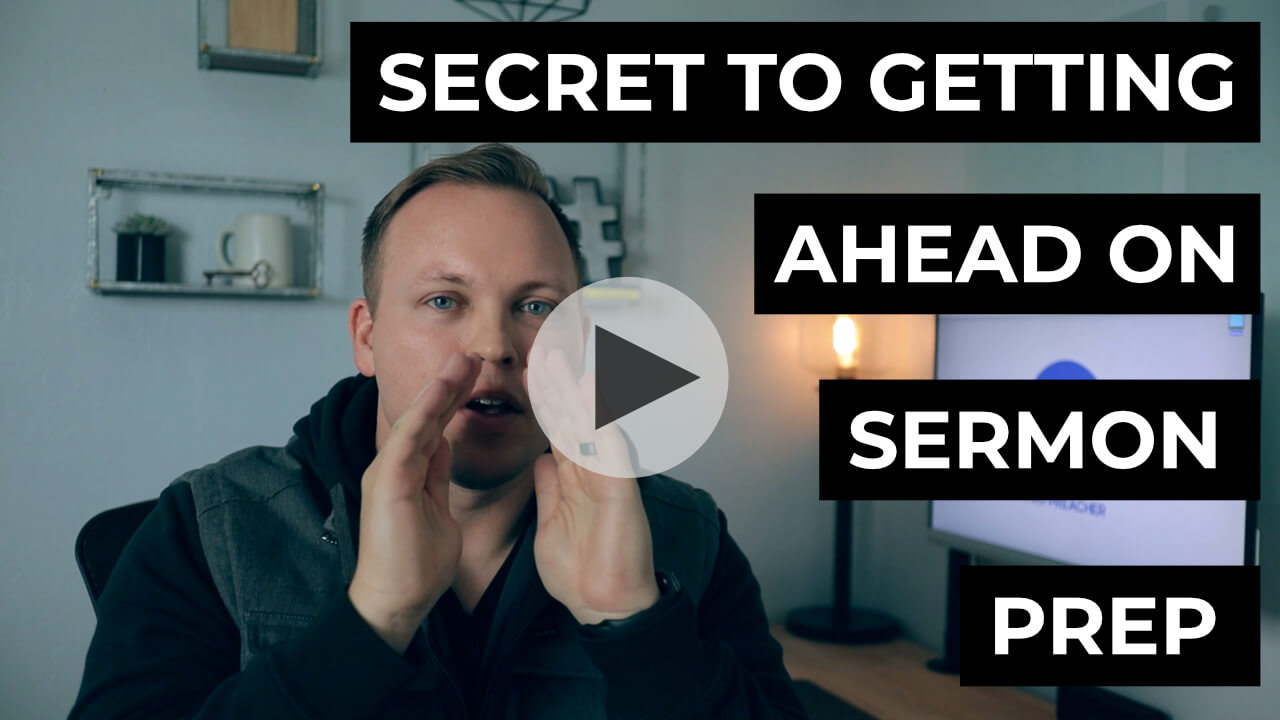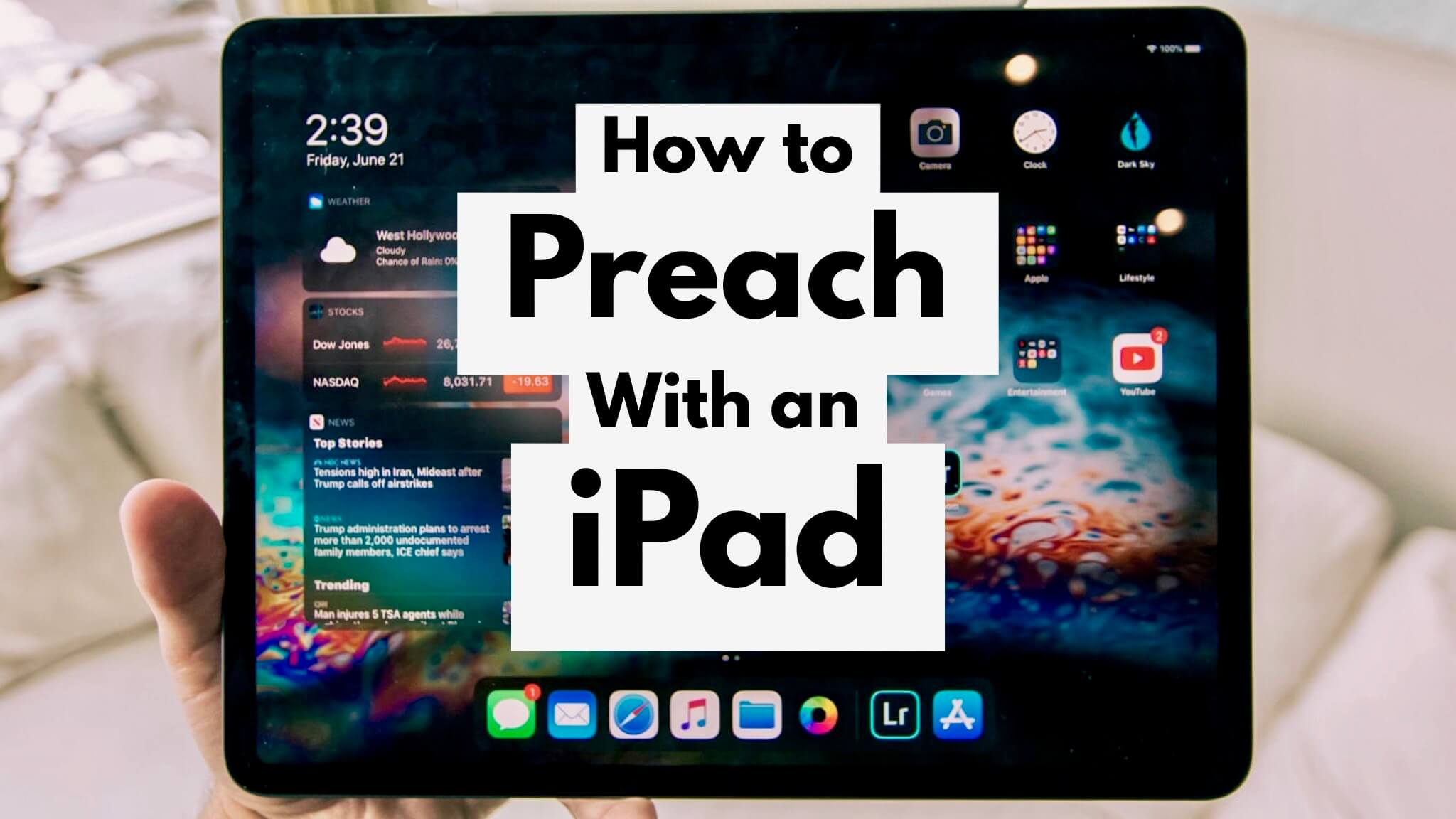How to Write A Sermon – 7 Steps to A Memorable Message (Step 3)
Crafting a sermon is a lot like building a house. There are 7 different stages that the construction of a message must go through before it is completed.
In previous posts we have discussed the first two steps:
Step 1: Pray – Connect to the power source.
Step 2: Study Scripture – Lay the foundation.
Now on to step 3.
Step 3: Build the Frame
When you are building a house, one of the most exciting days is the day the wooden frame is put up.

When my wife and I built our first house, for the first two months all of the work was done at ground level or below. There was nothing but a dirt lot, some wires, and a slab of concrete. But in one day the frame was suddenly up!
Our house had finally taken shape!
It wasn’t near finished, but we could finally visualize what the house was really going to look like. We could see the dimensions of each room. We could walk through the hallways. Although we could see through the walls, we could picture it finished in our minds. How exciting!
Step 3 in writing a sermon is to put up the frame – the Big Idea. Just like a frame makes the walls of the house, the Big Idea makes the walls of the sermon.
By “Big Idea” I mean the one thing, based on the scripture studied in Step 2, that your listeners need to know when you are done preaching.
If you had to boil the entire sermon down into a sentence or two, what would you say? That is the Big Idea. It is the sermon in a Tweet.
With the first two steps all you have is prayer and some Bible verses. The sermon could take many shapes. The Big Idea sets the framework – the direction of your message.
Everything in your message should be based on the Big Idea. The goal of the sermon should be to show your audience where the Big Idea comes from scripture, how it applies to their life, and why it matters.
So instead of preaching a 7 point sermon where all the points touch on a different topic, the Big Idea keeps you focused on one. It helps you eliminate anything that is not focused on the central idea of the text. You may still have a handful of points depending on your style, but now they are all focused on the same idea.
The Big Idea keeps your preaching laser-focused on one idea for a greater impact than throwing a hundred ideas and hoping a few stick.
How to craft the Big Idea
In step 2, you did your homework. You now know the scripture that you are preaching extremely well. You have read multiple translations. You consulted a few commentaries. Maybe you even did a Greek/Hebrew word study because you are a scholar like that.
You are now an expert on the text. You already know what the main topic is. Maybe it’s prayer, or faith, or forgiveness. But the Big Idea goes further than just the topic. The Big idea summarizes the key idea or action point about that topic in a memorable way.
1. Summarize The Passage:
The best way to get to the Big Idea is to summarize the passage in your own words.
If you are having trouble, start by asking questions. What should be done? Who needs to do it? Why do they need to do it? When and where should they do it? How should they do it?
Another way to do this is to follow the questions that Andy Stanley suggest in his book Communicating for a Change: What do they need to know? Why do they need to know it? What do they need to do? Why do they need to do it?
Once you have written a response to these questions, or at least thought it through, condense it further.
2. Summarize the Summary in a Memorable Phrase:
Summarize everything in one phrase. Make the sentence memorable. Something catchy. Something people will be able to carry with them throughout the week.
Your people may not all be able to quote the scripture you preach, but they can remember a catchy phrase. As Andy Stanley says, “Memorable is portable.”
Before you reject this idea, think about Jesus. Jesus was the master of memorable statements.
Some of Jesus’ Big Idea phrases:
- “Do to others as you would have them to do you.” (Luke 6:31)
- “Love your neighbor as yourself.” (Mark 12:31)
- “No one can serve two masters.” (Matthew 6:24)
- “Do not worry about tomorrow, for tomorrow will worry about itself.” (Matthew 6:34)
- “What good will it be for someone to gain the whole world, yet forfeit their soul?” (Matthew 16:26)
- “Do not judge, or you too will be judged.” (Matthew 7:1)
This list could go on an on. The point is, Jesus used memorable phrases that we still easily remember out today.
These ideas all summarize a deep truth in a simple sentence that everyone in the crowd could remember.
Example of a crafting the Big Idea
Lets look at how this process works.
Here is an example from a sermon I have preached in the past.
Scripture: 1 Timothy 6:17-19 (NIV)
“17 Command those who are rich in this present world not to be arrogant nor to put their hope in wealth, which is so uncertain, but to put their hope in God, who richly provides us with everything for our enjoyment. 18 Command them to do good, to be rich in good deeds, and to be generous and willing to share. 19 In this way they will lay up treasure for themselves as a firm foundation for the coming age, so that they may take hold of the life that is truly life.”
Here is how I then I then summarized this passage.
Summary: We are rich. God has blessed us with all we have for our joy (v.17). But with blessing comes responsibility to be generous and share with others (v.18). Doing this not only builds treasure in heaven, but helps us live the best life possible today (v.19).
Big Idea: We are blessed to be a blessing.
Have you heard this phrase before? Maybe, but that’s OK. The Big Idea doesn’t have to be original. Sometimes it is even a direct quote from the scripture.
I loved this memorable phrase because it has a double meaning that summarizes the text perfectly. God blesses us so that we can then bless others. But as a bonus, by blessing others we also live a blessed life.
Simple. Memorable. It worked.
My entire sermon from introduction to conclusion was then laser-focused around the framework of this principle. I repeated this phrase as much as possible throughout the message so it would be permanently burned into the memories of my audience.
Do you see now why a Big Idea is like the frame of a house? It gives you the framework of what shape your message will take.
At this point you have prayed to connected to the power source (step 1). You have studied scripture to lay the foundation (step 2). You have found the Big Idea that will be the framework for your message (step 3). But the house isn’t finished yet. It is still just a shell.
It is time for step 4 – visiting the design center. (coming soon…)
[/fusion_builder_column][fusion_builder_column type=”1_1″ background_position=”left top” background_color=”” border_size=”” border_color=”” border_style=”solid” spacing=”yes” background_image=”” background_repeat=”no-repeat” padding=”” margin_top=”0px” margin_bottom=”0px” class=”” id=”” animation_type=”” animation_speed=”0.3″ animation_direction=”left” hide_on_mobile=”no” center_content=”no” min_height=”none”][If you haven’t noticed, these steps are similar to my 7 Step Sermon Prep Checklist that you can get FREE here]
This article is part of the Preaching 101 series. More from this series:






Hi Brandon, I’m eager to learn to write a sermon could you please publish the step 4.
Thank you.
Thank you for the learning.
thanks very informative recently ordained
You’re welcome! Glad you found this helpful
great thoughtful and right